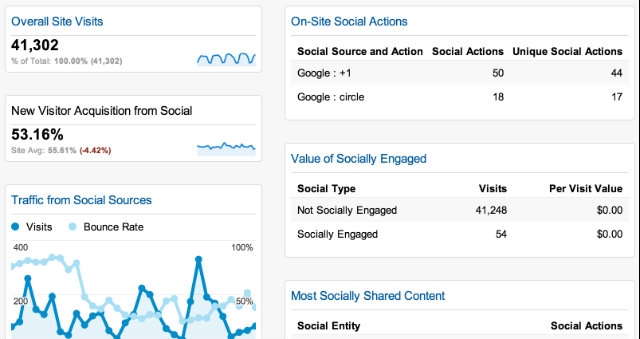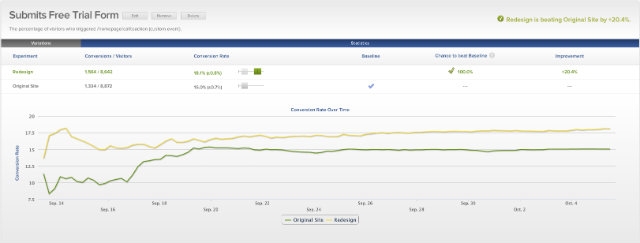Conversion Rate Optimization (CRO) is the process of continually improving a website or landing page to create the most effective experience for potential customers. For businesses that want to stay ahead, it’s now an essential strategy in the highly competitive online marketing space.
However, before you can move forward with a CRO campaign it’s necessary to do a full audit of your website and traffic sources to lay the foundation for your ongoing optimization. Here’s a process you can follow to conduct a CRO audit.
Conversion Rate Optimization Audit Process
The first question to ask when beginning a CRO audit is what are the specific goals of your website. Goals can include ecommerce sales, generating leads, increasing subscribers or any number of conversion types. An understanding of your website’s goals will inform the ongoing optimization process – any aspect of the website that does not move the user towards your goals should be eliminated.
With the specific CRO goals in place, the next step is to use Google Analytics to identify all sources of traffic to the website and their conversion rates. This information is necessary to determine where the website is already performing and where improvements need to be made. For each underperforming traffic source, you need to determine which of their corresponding landing pages are also not performing. These pages should be the initial focus of your audit.
In order to improve the low-performing pages, they must be mapped within your conversion funnel, which is the complete path a customer takes from first time visitor to repeat buyer.
The goal of your audit is to recommend ways to streamline and simplify your conversion funnel as much as possible in order to improve the overall conversion rate of the website.
Here are some principles to follow when identifying these opportunities:
- Every step must be necessary for the conversion. Any unnecessary steps should be stripped out.
- Every step should be simple and easy for the user to understand.
- The conversion should ask for the least amount of information possible.
- Each step should build the user’s confidence in the website, product/service and brand.
- An overview of the specific goals of the CRO audit.
- A complete description of the conversion funnel, with an explanation for why each step of the process is (or is not) necessary.
- An analysis of competitor websites, including specific points of difference.
- A list of all information about your business that can be used to build confidence and engagement throughout the conversion funnel.
- An overview of website traffic, including the sources of traffic and the conversion rate of each source, visitor loyalty and how often they purchase, visitor recency, length of visit, and bounce rates by page with potential reasons why they have a high bounce rate.
- The results of heat map and eye tracking analysis in order to show how users are interacting with each page and where they are focusing.
- The results of a full click analysis, which provides a clear outline of how visitors are navigating the site.
After building the ideal conversion funnel, you’ll need to look outwards for optimization ideas. Review competitor and industry leading websites to see where they get their traffic, the fundamentals of their marketing strategies and how their conversion funnels work. This can be a great way to find opportunities that may have been missed in an internal review.
Once you’ve determined the areas that are in need of optimization, you should conduct an internal review of your business to find customer testimonials, media mentions, awards granted and internal assets that can be used to enhance each step of your conversion funnel. These can be highlighted along the conversion funnel in order to continuously build the user’s confidence.
Building Your CRO Audit Report
A CRO audit report is necessary to effectively combine the insights you have gained about your conversion funnel with the information that has been collected from the tools you’ve added to your website (see session below for recommended tools). The report should include:
At the end of your CRO audit report, you can begin to distil all of this information into a set of specific recommendations to the website. The key will be to then split test every recommendation you make.
Tools For Conversion Rate Optimization
CRO requires information; and that information is garnered through the use of CRO tools. There are hundreds if not thousands of websites, apps and software products that have been developed to help with CRO. And while a number of products are available that perform these functions, here are some of the most effective in providing the necessary information:
Google Analytics – With detailed statistics on your website, visitors and traffic sources, Google Analytics is an essential tool for all online marketers.

Crazy Egg – Using heat map and scroll map reports, Crazy Egg offers you an understanding of how your visitors engage with your website by showing where people click on each page. This gives you the opportunity to see which elements are working and which are not.

Optimizely – By allowing you to split test specific design elements, Optimizely is an excellent tool for managing your split tests, which you will need to do with pretty much every change you make to your website as a result of your audit.

Clicktale – By allowing you to watch a video of your visitors’ entire browsing session, Clicktale allows you a direct view of how users interact with your website.

Qualaroo or SurveyGizmo – By surveying users who visit your website, applications like Qualaroo or SurveyGizmo help you to make more informed decisions about what your visitors want.
User Testing – By providing access to actual people and giving them a task to complete on your website, you can see where they’re stuck and then fix the issues.
Concluding Thoughts
Never feel that the process is finished, but instead constantly test new strategies. Find new sources of traffic for your website and split test changes to the conversion funnels. Continually survey visitors and figure out what they want – then give it to them. And always track everything so you know what works and what doesn’t.
If you maintain the mindset of constantly improving your website, you will eventually surpass and then dominate your online competitors.








